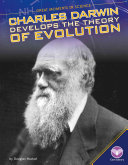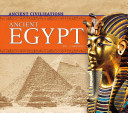ROWELL, Rebecca
6 Articles
Last 30 days
Last 6 months
Last 12 months
Last 24 months
Specific Dates
From:
To:
Mathew Brady Records the Civil War
Uninteresting narratives makes these a secondary purchase at best.
This volume follows the work of Edward S. Curtis, who photographed Native American nations from the 1890s to the late 1920s. Taking into consideration Curtis's romanticized view of Native Peoples, Nardo provides a balanced portrait of Curtis's portraits and experiences. Well-reproduced black-and-white photos throughout enhance the fascinating account. Additional information on key photographs is appended. Reading list, websites. Bib., glos., ind.
Charles Darwin Develops the Theory of Evolution
Strong choices for deepening subject collections.
Each book starts with an iconic scientific moment then explores its historic and biographical context, with supporting images, primary sources, curated online sources, and critical thinking questions interspersed throughout. With a consistent format, the books respond to core curriculum guidelines and expand on these scientists' founding stories, although some of the "great moment" hooks work better than others. Reading list, timeline. Glos., ind. Review covers the following Great Moments in Science titles: Charles Darwin Develops the Theory of Evolution, Isaac Newton Discovers Gravity, Louis Pasteur Advances Microbiology, Thomas Edison Invents the Light Bulb, Marie Curie Advances the Study of Radioactivity, and Rachel Carson Sparks the Environmental Movement.
Ancient Egypt
Excellent.
Each volume introduces a civilization by covering a wide variety of
topics including origins, political systems, religions, and daily
life. Chapters are broken into subcategories, with numerous
sidebars, photos, illustrations, and maps adding detail to the main
narrative. The texts themselves are accessible without dumbing down
the information. There are four other spring 2015 books in this
series. Reading list, timeline. Bib., glos., ind. This review
covers the following Ancient Civilizations titles: Ancient
Maya, Ancient Rome, Ancient Mesopotamia, and
Ancient India.
Pope Francis: Spiritual Leader and Voice of the Poor
Gr 6–10—These biographies each begin with a pivotal event in the subject's life...
Life Science Through Infographics
Gr 3–5—A well-designed infographic simultaneously conveys facts and presents their interrelationships in visual ways...
Wikipedia
Gr 6—8—Written in a clear, linear fashion, this series offers vivid, well-researched details about the development of technological advancements considered essential in today's society...
ALREADY A SUBSCRIBER? LOG IN
We are currently offering this content for free. Sign up now to activate your personal profile, where you can save articles for future viewing






